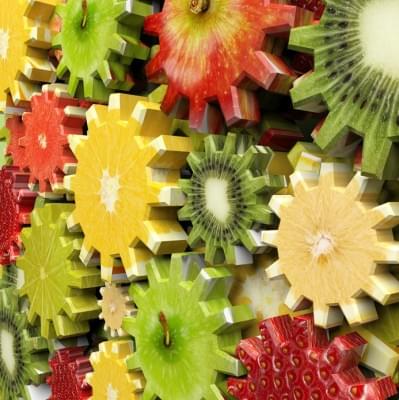Magazine: Neurogastronomy
Did you know that men eat more in the company of women than alone? Have your heard that eating yogurt with a silver spoon makes it taste creamier than from a plastic spoon? When we are eating in a restaurant, we make decisions based on emotions. This article sets out to examine the results of research conducted in the psychology of eating. We will be taking a look at those factors which can directly influence guests’ choice of food or satisfaction in a restaurant. We won’t be drawing conclusions this time, it is up to you, dear reader, to decide what you can use from the information presented here.
Those who are familiar with the Delboeuf illusion won’t be surprised to hear that guests will put more food on large plates than on small ones. If we make sandwiches and cut some of them into 4-5 pieces, what we see is that those people who are served the small ones eat less than those who get the whole sandwiches: the brain perceives food that is consumed in several pieces as we were eating more. Those who pour an alcoholic drink to themselves put 20-30 percent more in their glass if it is short and wide instead of being tall and thin. May be it was whisky manufacturers who made the first glasses in history?
Asians believe many colours need to be present in a dish. It is a fact that it is a pleasant visual experience if there are many colours on a plate. The diversity of colours makes us consume more: a bowl full of candy in various colours is eaten faster than if they are of the same colour – even if the coloured candies all taste the same. Red and orange are colours that make guests eat faster and more, no wonder that they are frequently used by fast food chains. The more a plate’s colour differs from the food, the less guests take from it: we put more tomato soup in a red plate than in a white one.
Guests are also influenced by sounds, especially music. If mellow music is played (and the light is pleasant too) in a fast food restaurant, guests eat 150-200 calories less and enjoy food better. Guests are more likely to pick expensive dishes in a restaurant where classical music is played. Fragrances also affect guests: vanilla, lavender or chamomile have a calming effect, while mint, lemon, orange or cinnamon make guests more active.
Prices can also be used to ‘manipulate’ the consumer brain. Restaurants can use the same trick as hypermarkets or IKEA: if some of the dishes are very cheap or expensive, guests will perceive other prices differently, e.g. if a steak made from Kobe beef costs HUF 40,000, an Angus rib-eye steak will seem a real bargain for HUF 5,000! It depends on one’s attitude what you think of these methods, but one thing is for sure: restaurant owners offer various choices and guests can decide freely.
Related news
Related news
Visit Hungary places greater emphasis on sustainable tourism – Sustainia Roadshow launched
🎧 Hallgasd a cikket: Lejátszás Szünet Folytatás Leállítás Nyelv: Auto…
Read more >Gundel Award Ceremony 2025
🎧 Hallgasd a cikket: Lejátszás Szünet Folytatás Leállítás Nyelv: Auto…
Read more >Experience, timing, awareness: a new travel logic is emerging towards 2026
🎧 Hallgasd a cikket: Lejátszás Szünet Folytatás Leállítás Nyelv: Auto…
Read more >






